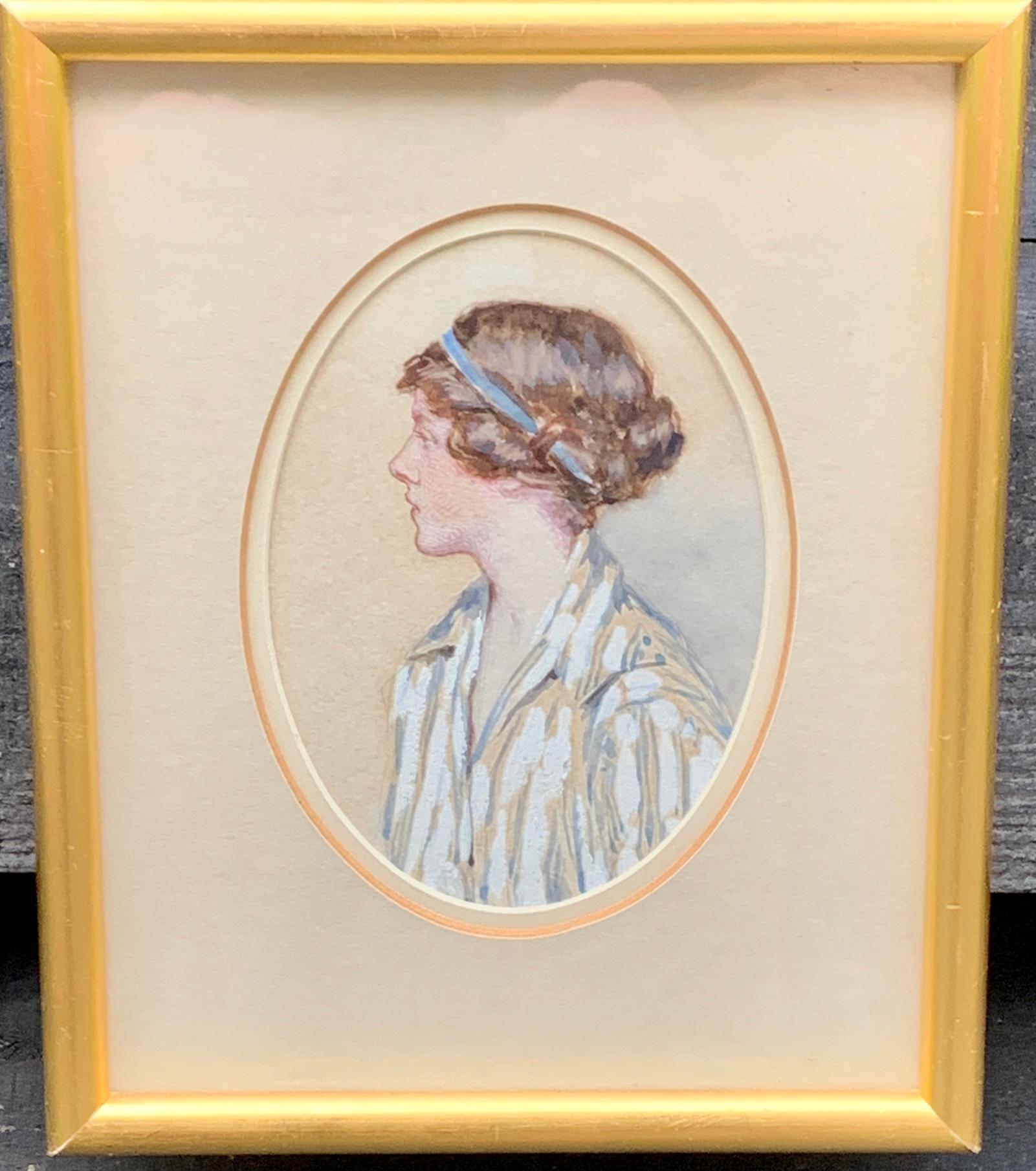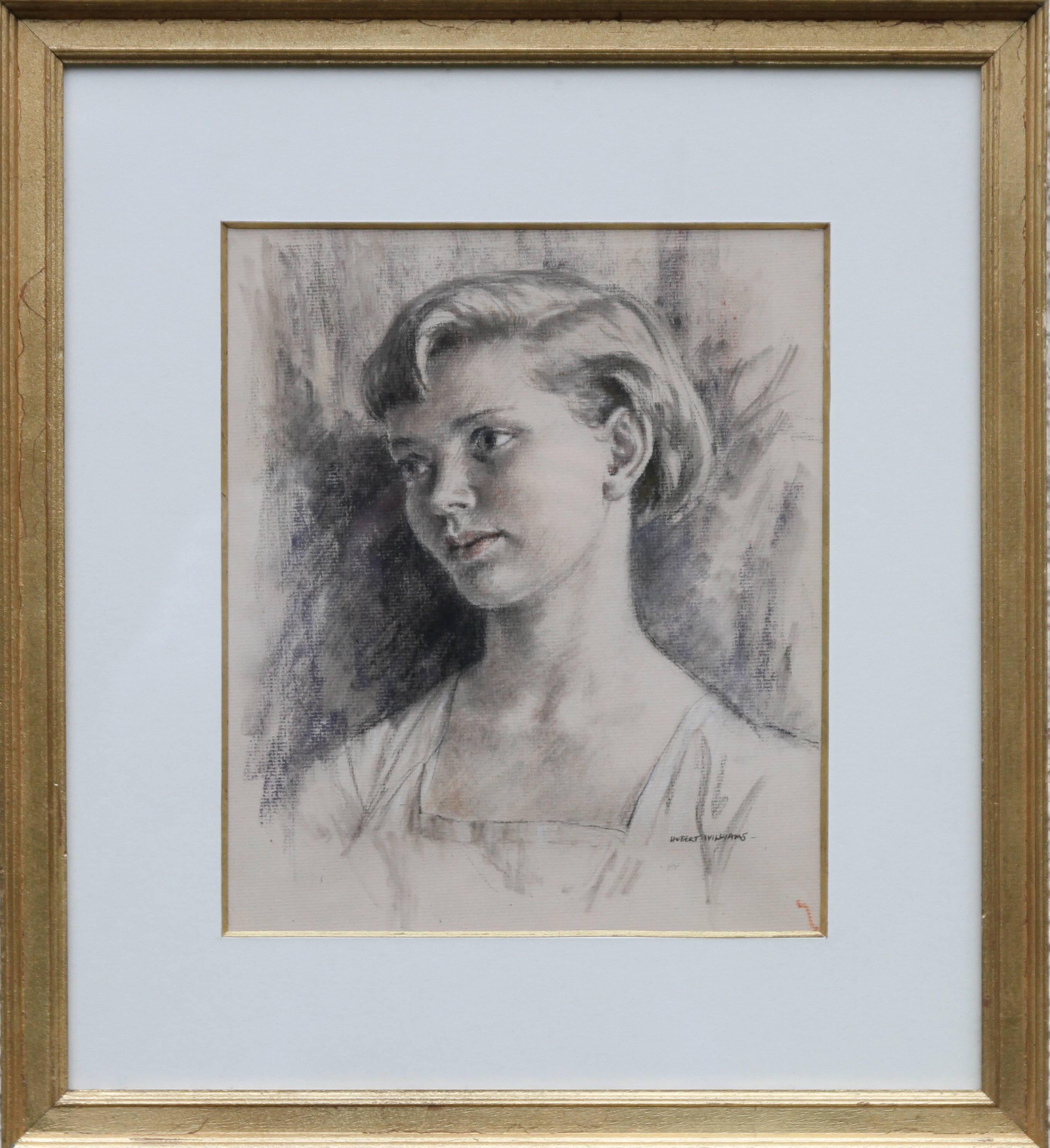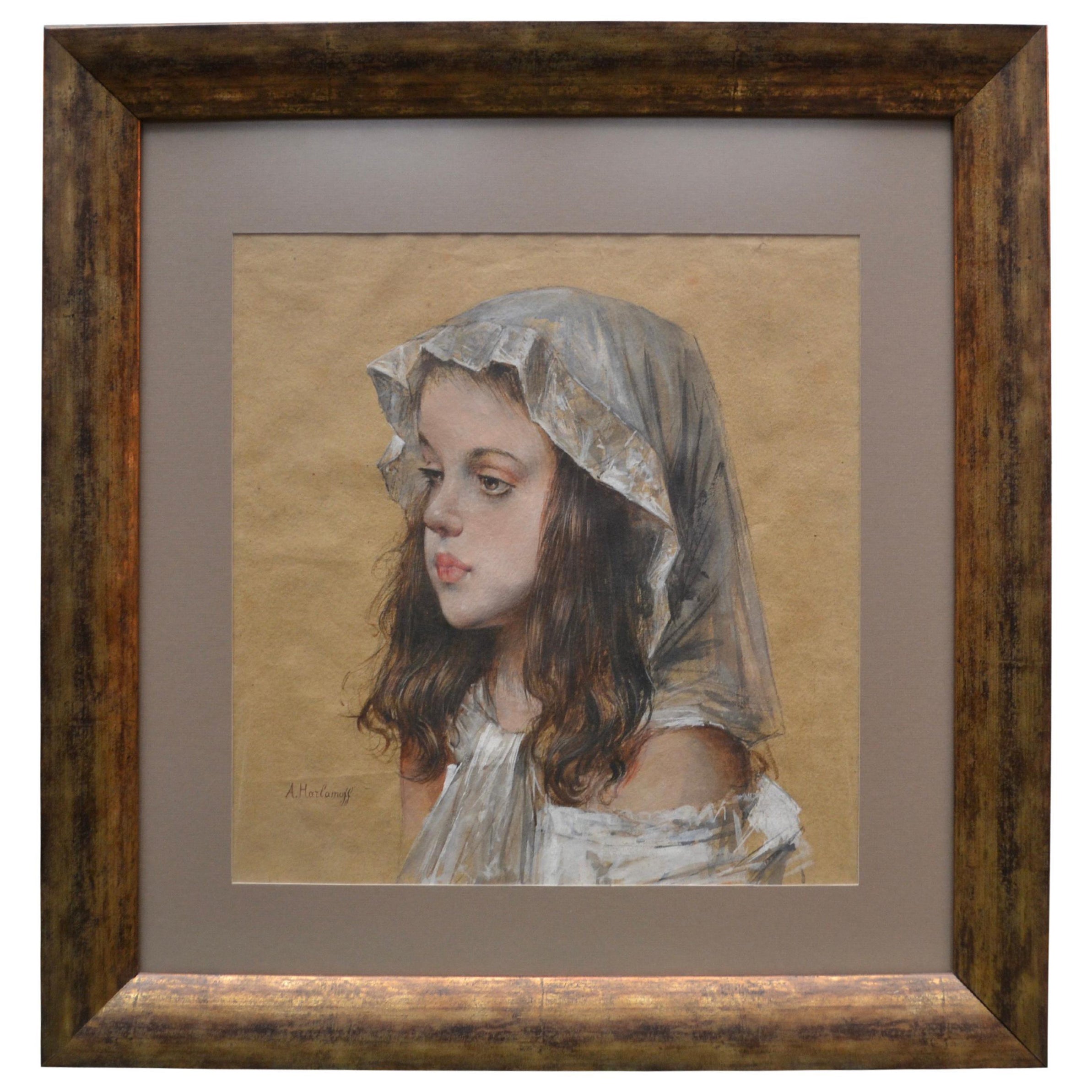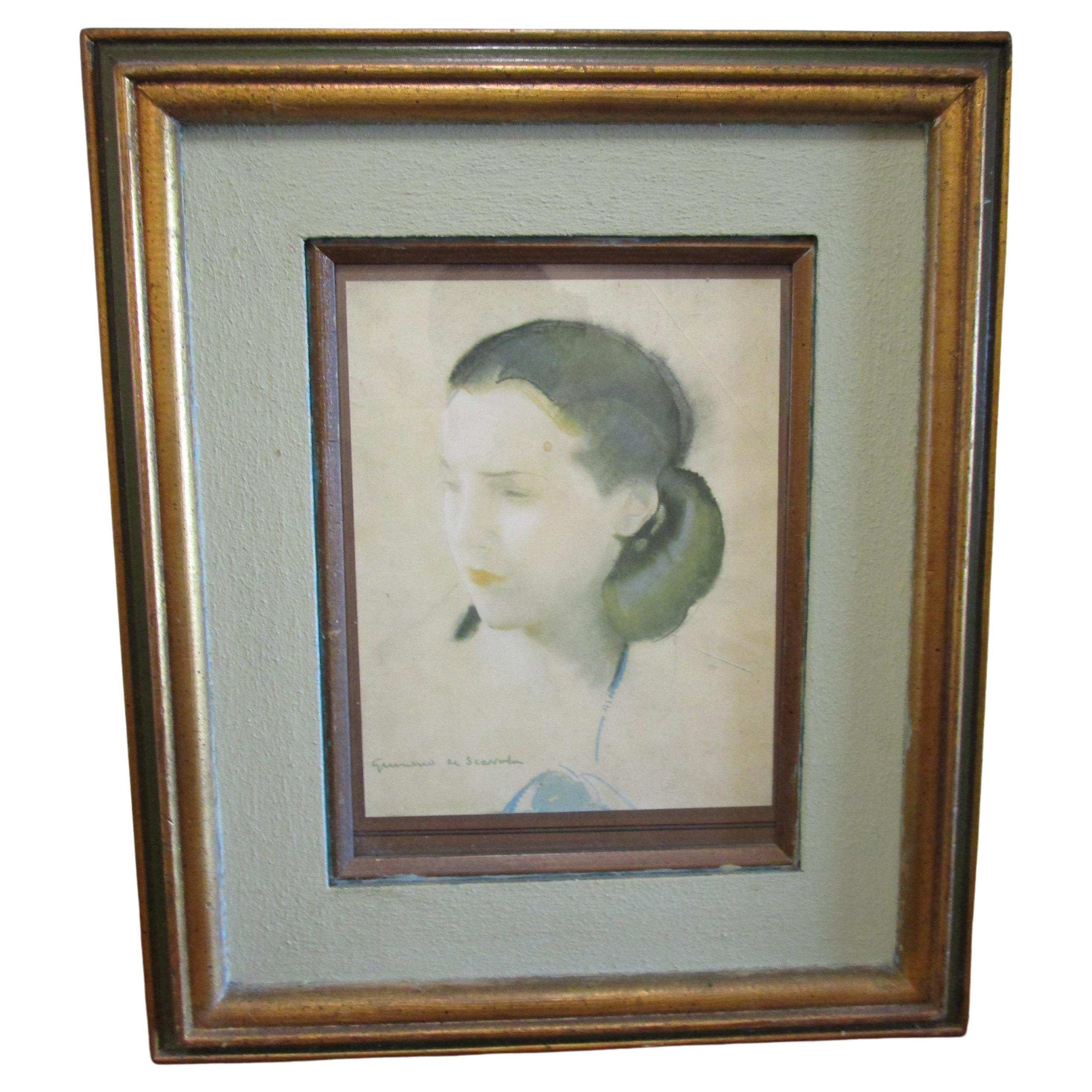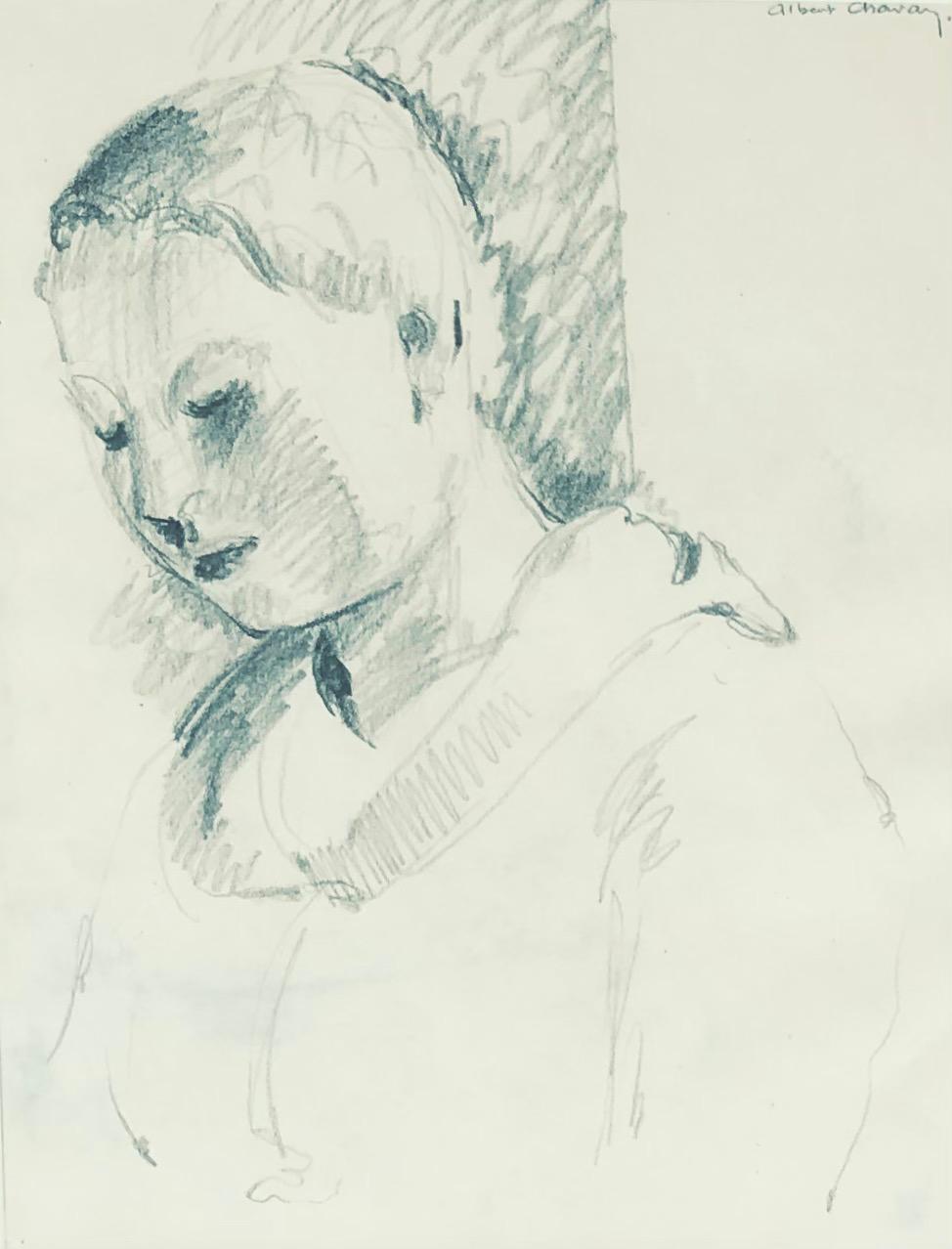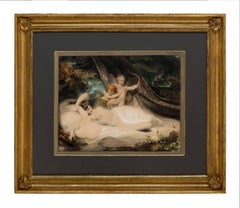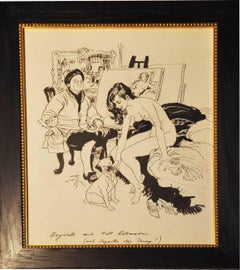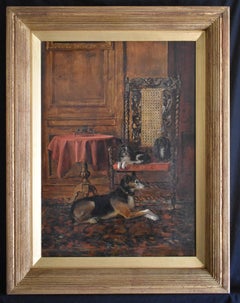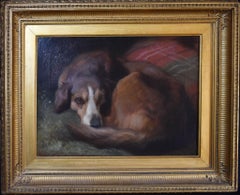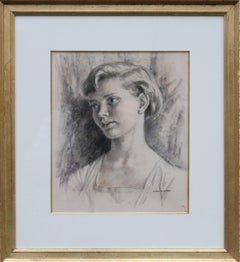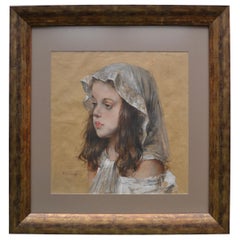Items Similar to A young beauty
Want more images or videos?
Request additional images or videos from the seller
1 of 5
George Lawrence BulleidA young beauty
$1,569.11
£1,140
€1,336.26
CA$2,142.14
A$2,383.04
CHF 1,249.22
MX$29,120.19
NOK 15,907.26
SEK 14,974.49
DKK 9,974.70
Shipping
Retrieving quote...The 1stDibs Promise:
Authenticity Guarantee,
Money-Back Guarantee,
24-Hour Cancellation
About the Item
George Lawrence Bulleid (1858-1933)
A young beauty
pencil and watercolour
3 ⅛ x 2 ⅜ in. (7.9 x 6 cm.)
frame 9 ⅜ x 8 ¼ in. (23.9 x 20.9 cm.)
- Creator:George Lawrence Bulleid (1858 - 1933, British)
- Dimensions:Height: 3.12 in (7.9 cm)Width: 2.37 in (6 cm)
- Medium:
- Movement & Style:
- Period:
- Condition:
- Gallery Location:London, GB
- Reference Number:1stDibs: LU80612356893
About the Seller
5.0
Vetted Professional Seller
Every seller passes strict standards for authenticity and reliability
Established in 2016
1stDibs seller since 2017
28 sales on 1stDibs
Typical response time: 4 hours
- ShippingRetrieving quote...Shipping from: London, United Kingdom
- Return Policy
Authenticity Guarantee
In the unlikely event there’s an issue with an item’s authenticity, contact us within 1 year for a full refund. DetailsMoney-Back Guarantee
If your item is not as described, is damaged in transit, or does not arrive, contact us within 7 days for a full refund. Details24-Hour Cancellation
You have a 24-hour grace period in which to reconsider your purchase, with no questions asked.Vetted Professional Sellers
Our world-class sellers must adhere to strict standards for service and quality, maintaining the integrity of our listings.Price-Match Guarantee
If you find that a seller listed the same item for a lower price elsewhere, we’ll match it.Trusted Global Delivery
Our best-in-class carrier network provides specialized shipping options worldwide, including custom delivery.More From This Seller
View AllVenus
By Richard Westall
Located in London, GB
Richard Westall, R.A. (1765-1836)
Venus
signed and dated ‘R. Westall 1794’ (lower right)
pencil and watercolour, with white heightening
image 11 ⅞ x 15 ¼ in. (30.2 x 38.7 cm.)
frame 22 ⅛ x 26 in. (56.3 x 66.1 cm.)
Provenance:
Private Collection, UK.
Venus (1794) was produced during a highly creative and defining period of Richard Westall’s career and artistic development, when from 1790-95 the ambitious young artist was sharing a house at 57 Greek Street, Soho, with his friend Sir Thomas Lawrence, the future President of the Royal Academy.
Whilst lodging together, Lawrence became an Associate of the Royal Academy in 1791, Westall the following year, and both were elected full-members in 1794 – the year Lawrence was appointed Painter-in-Ordinary to His Majesty King George III. Westall was to become Queen Victoria’s first Drawing Master, before her ascension to the throne.
It was in this very year, 1794 - as the two young artists became Royal Academicians - that the present watercolour was executed, and it is exciting to speculate that Lawrence would have examined and given his thoughts on the work.
Highly comparable to The Wallace Collection’s Nymph and cupids (c.1793, cat. P757), acquired by Francis Seymour-Conway (1777-1842), 3rd Marquess of Hertford, (who hung it in his bedroom), the mid-1790s saw Westall exhibiting and returning to similar subject-matter on a number of occasions. Two works with titles that could be applied to the present picture were exhibited at the Royal Academy, in 1794 (no. 341 Nymph and Cupids) and 1795 (no. 620, A Wood–nymph and Cupids). However, a print after the watercolour, engraved by F. Screen, entitles the piece Venus.
Westall is regarded as a great virtuoso watercolourist, and Venus is evidence of the young artist’s mastery of the medium. Indeed, it is unusual to find a watercolour of comparable age so well preserved, and retaining such vibrancy - the superb condition providing an insight into his exceptional brushwork and use of colour.
Venus languishes luxuriously on her woodland bed, the trunk of a tree resembling a curtain, while three winged putti play beside her, seeming to gesture to someone in the woods. Cupid draws back his bow and aims an arrow of love, perhaps about to pierce the heart of a hunting nobleman, or unsuspecting woodcutter. The striking contrast between the almost luminescent nymph, with the deep, rich, luxuriant forest, gives the glade an alluring sense of mystery – perhaps an allusion to the mysteries of the heart, a pre-occupation with Romanticism, central to the emerging thought of the time. Westall can be classified as one of the great Romantic artists, and even painted Lord Byron’s portrait...
Category
1790s Romantic Figurative Drawings and Watercolors
Materials
Watercolor, Pencil
$25,463
Artists and their muses
Located in London, GB
Playboy School, 20th Century
Artists and their muses: Titian and Violante; Sir Peter Lely and Nell Gwyn; Francois Boucher and Louise O’Murphy; Hogarth, Nell...
Category
1980s Romantic Figurative Drawings and Watercolors
Materials
Ink, Watercolor, Pencil
$5,780
Waiting for mistress
Located in London, GB
H.S. Phillip, circa 1855
Waiting for mistress
signed and dated 'H.S. Phillip June 1855' (lower left)
oil on canvas
22 x 16 in. (56 x 40.6 cm.)
frame 27 ¾ x 21 ⅝ in. (70.5 x 55 c...
Category
19th Century Realist Animal Paintings
Materials
Canvas, Oil
The shepherd's friend
By Edwin Douglas
Located in London, GB
Attributed to Edwin Douglas (1848-1914)
The shepherd's friend
unsigned
oil on canvas
12 ¼ x 16 ⅛ in. (31 x 41 cm.)
with frame 18 ½ x 22 ½ in. (47 x 57...
Category
19th Century Realist Animal Paintings
Materials
Canvas, Oil
The sage - a favourite dog
By Lilian Cheviot
Located in London, GB
Lilian Cheviot (1876- c.1936)
The sage
signed 'L. Cheviot' (lower right)
oil on canvas
12 x 10 in. (30.5 x 25.3 cm.)
with frame 15 ¾ x 13 ¾ in. (40 x 35 cm.)
Renowned for her sens...
Category
Early 1900s Realist Animal Paintings
Materials
Canvas, Oil
A well-trained cocker spaniel
By Charles Frederick Tunnicliffe
Located in London, GB
Charles Frederick Tunnicliffe, R.A. (1901-1979)
A well-trained cocker spaniel
signed ‘C.F. Tunnicliffe’ (lower left)
charcoal and white heightening
11 ¾ x 8 ⅝ in. (29.8 x 21.9 cm.)...
Category
Mid-20th Century Realist Animal Drawings and Watercolors
Materials
Charcoal, Gouache
You May Also Like
Early 20th century English portrait of a young girl, Deborah Blencowe
By Louise Burrell
Located in Woodbury, CT
Louise H. "Louie" Burrell (née Luker 1873 – 1971) was an English-born artist who also lived in Canada and the United States.
The daughter of William and Ada Luker, both artists, Bur...
Category
1920s Victorian Portrait Drawings and Watercolors
Materials
Paper, Watercolor
$1,160 Sale Price
20% Off
Free Shipping
Portrait of a Lady - British Art Deco 30's drawing young woman good provenance
By Hubert John Williams
Located in London, GB
A fine and detailed Art Deco pencil, black, red and white chalk portrait of a young woman by Hubert Williams. The work dates to circa 1930 and is very skilful in its execution. A bea...
Category
1930s Realist Portrait Drawings and Watercolors
Materials
Chalk, Color Pencil
Early Portrait Study of a Young Girl
By Emile Lejeune
Located in Houston, TX
Portrait of a young girl with a styled hair cut. The work is signed and dated by the artist. The paper is not framed.
Many others are available. Please inquire to buy the entire col...
Category
1930s Naturalistic Portrait Drawings and Watercolors
Materials
Color Pencil, Graphite
Portrait of a Young Girl by Alexei Harlamoff
Located in Vancouver, British Columbia
Portrait of a young Russian or French girl executed in charcoal and gouache on paper. Harlamoff was most renowned for his masterful portraits of young girls of which this is a fine example, chosen for their charming and innocent beauty.
Signed lower left A. Harlamoff. Signed on the reverse Alexei Harlamoff.
Alexei Harlamoff was born in the village of Dyachevka near Saratov on the Volga. He studied at the Academy of Fine Arts in St. Petersburg, and he won both a Gold Medal and a scholarship in 1868. The scholarship enabled him to travel to Paris, where he studied under portrait painter Léon Bonnat, and by 1874 he was visited by Russian marine painter Alexei Bogoliubov, who reported back to Russia on the young artist’s visible success.
In 1875, Harlamoff exhibited his portraits of Louis and Pauline Viardot to great acclaim, marking a turning point in his career. French writer Emile Zola...
Category
Antique Late 19th Century French Romantic Paintings
Materials
Parchment Paper
Portrait of a Young Lady with Brown Hair, Lucien-Victor Guirand de Scevola
Located in Lomita, CA
This is a lithographic print after the pastel drawing by French illustrator and artist Lucien-Victor Guirand de Scevola (1871 - 1950) ...
Category
Mid-20th Century French Beaux Arts Prints
Materials
Wood, Paint, Paper
$264 Sale Price
20% Off
Young lady
Located in Genève, GE
Work on paper
Brown wooden frame with glass pane
36 x 30 x 1.5 cm
Category
Mid-20th Century Portrait Drawings and Watercolors
Materials
Crayon
